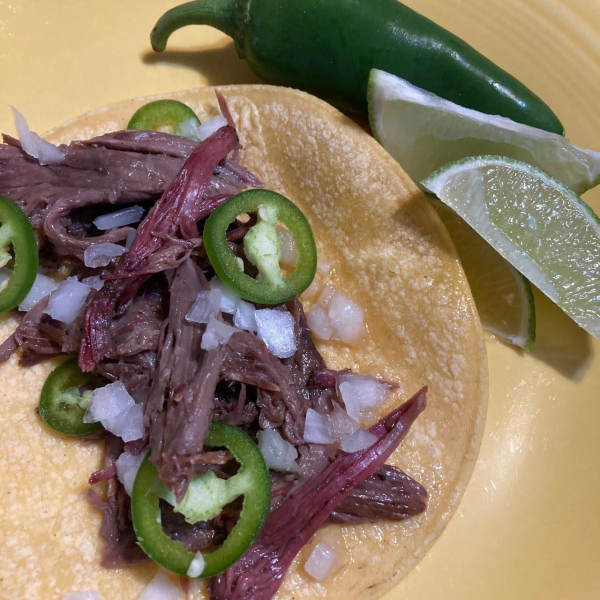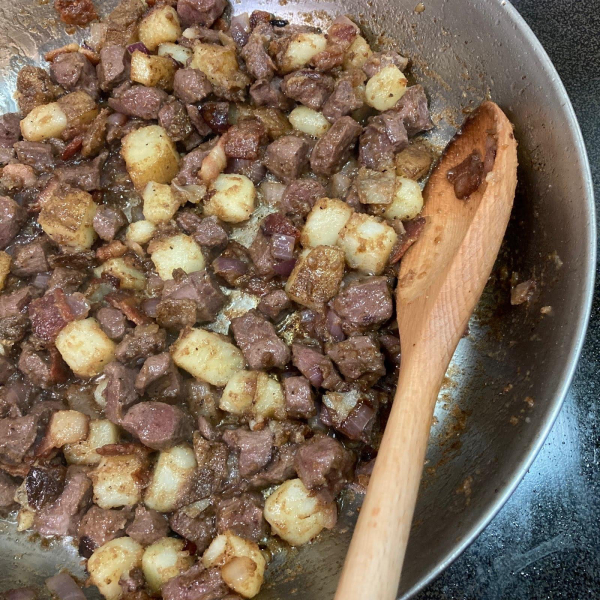By Ryan Hoover – Director, Handgun Hunters International

It’s time for Americans to readjust their sensibilities about what they eat. For too long, we’ve resisted adding good foods to our diet because our modern brain has found a way to convince us that certain foods are not suitable for consumption. In many other parts of the world, tradition or necessity have kept some of these foods in the local diet. As a hunter, I’m specifically talking about using more parts of the animals we hunt in the kitchen.
It never fails. I’ll describe how much I like to use the organ meat of the animals I hunt to someone, and they’ll immediately make The Face. You know the one. The nose wrinkles, the mouth goes flat, and the eyebrows furrow. It’s a sure sign that whomever I’m talking to thinks the food I’m describing is “gross.” I guess I can’t blame them. You’re not likely to find venison heart or liver on any of the menus of the local restaurants!
All of this is so unfortunate, as organ meats provide delicious and very nutrient-dense meals. Organs are high in protein (obviously) but also contain a host of nutrients like iron, vitamins A, and several types of B, as well as the minerals zinc, magnesium, selenium, and copper - all of which play a role in our body’s health function.
Let me stop here to say that there are some folks for whom organ meat consumption is not a good idea. If you suffer from gout, organ meat can exacerbate that condition. Also, while most research suggests that dietary cholesterol has little to no effect on your body’s total cholesterol, this is not true for about 30% of the population. For those people, their total cholesterol numbers could be at risk by consuming too much high-cholesterol organ meat. I am not a health professional, so I recommend discussing it with your doctor and nutritionist if you have concerns.
Also, you must ensure that any organs (as well as muscle) you consume are from healthy animals. If you notice off colors, spots, or other irregularities, it’s best to discard those pieces. Before you eat any internal organs, check with your local wildlife department to find out if there are any known illnesses or parasites.
How do we overcome the stigma attached to these wonderful pieces of meat? First, realize that organs (and other offcuts) are just as much a part of the animal we’re eating as the backstraps, tenderloins, and further beloved cuts of muscle meat. The second is by learning to prepare them in a way that reinforces that this food is good, not just some type of food medicine you should eat because someone told you to.
When cooking most organ meat, there is only one method to consider - hot and fast. The best and easiest way to cook organs is to fry them in butter. Other easy methods include grilling and stir-frying. There are a few exceptions to this hot and fast rule, but not many. For instance, some more muscular organs (heart, tongue) can be smoked. However, nothing will turn you off organ meat quicker than an overcooked, dry, tough piece. What organs am I talking about? Here’s a breakdown of the most common organ meats I eat and some basics.
Heart: If you want to dip your toe into the world of organ meat, I suggest starting with the heart. It is, after all, another muscle. The heart does not have any mineral taste that most other organs do and has a delightfully snappy texture when prepared right.

For example, it’s my tradition to make what my buddy calls “Hobo Heart Hash” after a hunt. This simple recipe of onions, potatoes, and diced venison heart cooked in butter and bacon fat. Cook the potatoes first until they are just about done, then add the onions and cook for a few minutes. Turn the heat up hot and add the deer heart, cooking for about a minute, and then eat! This is a simple method that I’ve also used to cook liver, kidneys, and testicles.
Kidney: Another excellent option for the fry-in-butter method, kidneys do have more of that tremendous mineral taste. Some must acquire this taste. Others already love it - but you never know until you try. A great way to prepare this is in the famous English recipe, steak, and kidney pie. Just replace the beef parts with venison for a wonderful savory dish.
Liver: The liver is the most famous - or infamous - organ meal. Liver and onions are a classic dish and are quite delicious when prepared right. You can do a couple of things to ensure yours turns out right. First, soak the liver in salt water. This will draw out most of the blood in the liver and clean up its taste. The second - and I know I keep saying this - is not to overcook it. The overcooked liver is not good and will put you off it. Undercooked is much better, but you can search online for the best recipe for you to use.
Tongue: The major exception to the hot and fast rule is the tongue. The tongue must first be boiled to soften and loosen its exterior membrane. Once that’s done, it can be pickled, stewed, or fried. The tongue is another one that does not have a weird flavor. A properly prepared tongue can be like a fantastic pot roast. I love pickled tongue on crackers or as part of a charcuterie board.

Testicles: While not exactly what I would call a whole meal (unless the whole deer camp contributes), testicles are a delicious snack. A membrane needs to be removed on the outside, but then they can be sliced and sauteed briefly in butter or used to make venison Rocky Mountain Oysters.
When we talk about shrinking the gut pile, remember, it’s not just organ meat that gets underutilized. Large bony parts of the animals we hunt often end up as fodder for the scavengers or just thrown into the grind pile. Don’t forget there’s meat on the neck, head, ribs, and shanks of deer, too! This meat is difficult to remove and get large, usable chunks off but is perfect for low and slow cooking methods that break down toughness and get meat to fall off the bone. Speaking of bones, don’t forget to save yours for making game stock!
This season, I will take my advice and try even more of the animals I hunt. This year, it’s going to be the intestines and stomach. Recently, while helping a buddy butcher hog, I saved the intestines for chitlins. I highly recommend this fatty, crunchy, delicious dish if you have never tried it. Also, one of my favorite foods is a Mexican dish called Menudo. It’s made with beef stomach. I’m hoping to experiment with making those recipes with venison parts!

When you head to the field this season, remember that the animal you are hunting has many delicious parts that you may not have thought to try. Try them! These parts are good for you and help stretch your harvest over more meals, something we are keen on these days. If you’ve been eating these parts for years and have some excellent ideas on how to prepare them, we’d love to hear about it – send your recipes to jay@theoutdoorwire.com, and we’ll post them in a future issue of The Hunting Wire. If you want to try these parts but don’t know how to get started, please reach out, and I’d be glad to offer some tips and recipes. I can be reached at ryan@handgunhuntersinternational.com
Ryan Hoover, Director, Handgun Hunters International, LLC

Ryan Hoover is the director of Handgun Hunters International (HHI), where he passionately works to spread the word about the benefits of hunting with a handgun. HHI is a valuable resource for handgun hunters of all experience levels using giveaways, a well-moderated forum, and upcoming instructional media. Through a series of deeply personal experiences, Ryan has come to believe that hunting with a handgun is a ton of fun and can improve your life by overcoming its challenges. He is always keen to find new hunters who want to try hunting with a handgun and to help them get started. His background includes serving as a US Navy firearms instructor and 15 years as a custom gun builder. He is also involved in issues regarding gun safety for families, nose-to-tail use of game meat, and hunting as a therapy for various mental health issues. He can be reached at: ryan@handgunhuntersinternational.com.